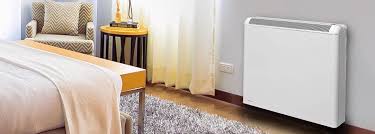Introduction
For decades, storage heaters have been a common sight in homes across the UK, especially in properties without access to gas central heating. While they once offered a practical way to take advantage of cheaper night-time electricity tariffs, many households now find them outdated, costly, and inconvenient.
With energy bills rising and homeowners demanding more control over their heating, changing storage heaters to electric radiators is becoming one of the smartest upgrades in 2025. Sleek, efficient, and controllable at the touch of a button, modern electric radiators provide the flexibility that storage heaters simply can’t match.
What Are Storage Heaters and Why Replace Them?
Storage heaters work by charging up overnight using off-peak electricity, then slowly releasing heat throughout the day. While this sounded cost-effective in the past, the reality is very different today.
- They often run out of stored heat before evening, leaving homes cold at night.
- They provide very little control — once the heat is released, it can’t be stopped.
- Energy tariffs have changed, making them more expensive to run.
As a result, many homeowners now see storage heaters as inefficient, expensive, and outdated. Replacing them with modern electric radiators gives you heating when you need it, not when your heater decides.
Benefits of Switching to Electric Radiators
✅ Better energy efficiency – Electric radiators only use power when you turn them on, so no more wasted heat.
✅ Lower heating bills – With precise thermostats and timers, you heat only the rooms you want, when you want.
✅ Improved comfort and control – Many radiators now come with Wi-Fi and smart app controls, allowing you to adjust settings from your phone.
✅ Stylish design – Unlike bulky storage heaters, electric radiators are slim, modern, and available in a variety of designs to match your interior.
✅ Eco-friendly heating – With the UK moving towards renewable electricity, electric radiators are an environmentally friendly choice for a greener future.
Storage Heaters vs. Electric Radiators
| Feature | Storage Heaters | Electric Radiators |
| Running Costs | Often high, waste energy | Lower with smart control |
| Heat Control | Poor – heat released automatically | Excellent – set by thermostat/app |
| Design | Bulky and outdated | Slim, modern styles |
| Efficiency | Inconsistent | High efficiency, on-demand |
| Comfort | Often cold by evening | Warm when you choose |
It’s easy to see why many homeowners in 2025 are choosing to replace storage heaters with electric radiators.
How to Replace Storage Heaters with Electric Radiators
Upgrading your heating system is a straightforward process:
- Assess your current system – Check the number and location of your existing storage heaters.
- Choose your electric radiators – Options range from standard digital radiators to smart Wi-Fi models with advanced features.
- Installation – Most electric radiators only require a standard electrical connection, making installation quick and clean. No plumbing or pipework is needed.
- Disposal – Old storage heaters can be safely removed and recycled by professional installers.
For most homes, this swap can be completed in a single day.
Smart Features of Modern Electric Radiators
One of the biggest advantages of upgrading is the smart technology built into modern electric radiators.
- Programmable thermostats: Set the exact temperature you want.
- Timers: Heat your rooms only when needed.
- Wi-Fi and app control: Adjust heating from your smartphone, even when away from home.
- Room-by-room control: Heat individual spaces instead of wasting energy on the whole house.
This level of control means you can enjoy comfort while keeping energy costs under control.
Costs and Savings
The upfront cost of changing storage heaters to electric radiators depends on the size of your home and the type of radiators you choose. However, the long-term savings are significant:
- Lower electricity use thanks to precision control.
- Reduced waste compared to overnight charging heaters.
- Potential savings of hundreds of pounds a year for the average household.
Over time, the investment pays for itself — while making your home warmer and more comfortable.
Government Incentives and Grants
While storage heater replacement isn’t always directly covered under the ECO4 scheme, some households may qualify for support if their home is considered energy inefficient. In addition, local councils and eco-grant programmes are increasingly promoting low-carbon heating upgrades. It’s worth checking with your local authority to see if you’re eligible for help.
Frequently Asked Questions
Find answers to commonly asked questions about our products and services.
